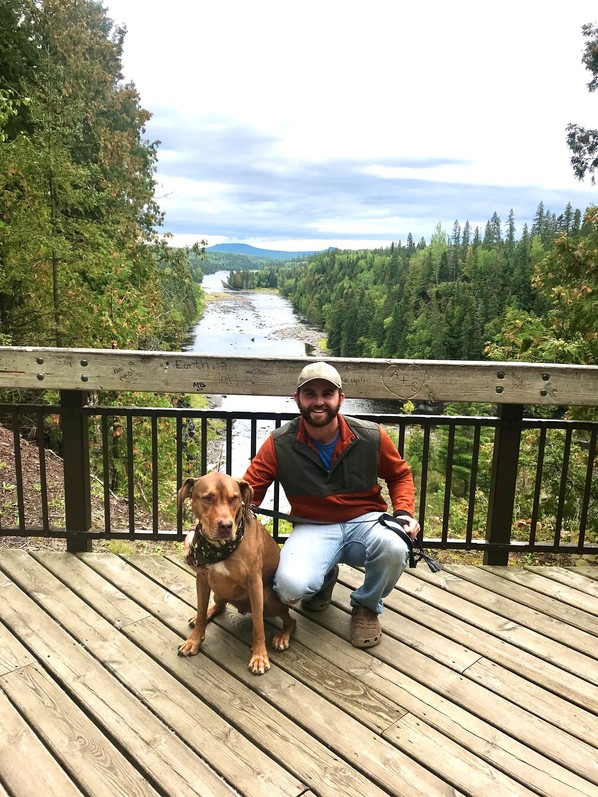Timely Topics for Operating and Maintaining Your Water System
Seasonal Water System Shutdown Guidance
Proper maintenance increases the longevity of a water system and reduces water quality problems that can lead to dissatisfied customers and regulatory issues. Completing shutdown procedures for seasonal water systems, or those systems that depressurize portions of the distribution, will help you reduce contamination risk and minimize work and time required when you begin operations next season. Shutdown is an opportune time for a thorough examination of the system’s physical components. Repairs can be accomplished without being an imposition on your customers. Recommended steps for seasonal water system shutdown on system inspection, de-pressurizing, and system protection can be found by referring to Seasonal Water System Shutdown Guidance.
Contact your sanitarian or engineer if you have questions about seasonal shutdown procedures.
________________________________________________________________________________
Maintaining Water Quality During COVID-19 Related Shutdowns
Due to the COVID-19 pandemic, many noncommunity public water supplies are experiencing unforeseen periods of little to no water usage due to shutdowns or a reduction in business. Water quality problems can arise as water remains stagnant in water storage, treatment equipment, and distribution piping. Examples of these problems include:
▪ Warming of cold water and cooling of hot water to within ideal growth range for bacteria including opportunistic pathogens such as Legionella;
▪ Sediment accumulation in pipes, leading to mechanical issues and bacteria growth;
▪ Loss of disinfectant residual and formation of disinfection byproducts for systems that disinfect;
▪ Increased lead and copper levels due to corrosion of pipes and fittings; and
▪ Growth of bacteria in water treatment equipment such as softeners and filters.
For these reasons, it is important to have a plan to restore and maintain water quality before and after reopening. Water quality can deteriorate within a week if water remains stagnant. For guidance on how to implement a reopening and maintenance plan, MDH developed a document that includes links to COVID-19 resources for maintaining water quality. Guidance can be found in: System Reopening and Maintaining Water Quality.
For more information about protecting public health and COVID-19, including guidance specific to different business and community settings, refer to: Coronavirus Disease 2019.
________________________________________________________________________________
Noncommunity Plan Review Guidance Updates
Minnesota Rules, part 4720.0010 requires that installations, alterations, and extensions of public drinking water systems need to be reviewed and approved by MDH. These projects include any work between the water source and the entry point to the distribution system such as:
▪ Water service lines between the well and pressure tank;
▪ Surface water intakes;
▪ Water treatment;
▪ Water towers, above-ground water storage, or other water storage installations;
▪ Well houses (buildings containing wells); and
▪ Pump houses (buildings containing water treatment, storage, or distribution equipment).
MDH has recently updated the plan review guidance to better communicate to public water systems and professionals designing these installations. The guidance is found on the revised Plan Review webpage: Plan Review for Noncommunity Systems.
Information on this page includes:
▪ When plan review is required, including a new table with specific examples for when plans need to be submitted to MDH;
▪ Who is qualified and responsible for preparing plans;
▪ In most cases, a licensed well contractor, master plumber, master water conditioning contractor, or professional engineer will be required, depending on the project;
▪ What information needs to be submitted for MDH review; and
▪ MDH has created and updated several forms to facilitate the submittal of plans and make it clear what information we are looking for.
The following forms are available on the webpage:
Water Service Line Plan Submittal
Water Treatment Plan Submittal
Surface Water Treatment Plan Submittal
Groundwater Under the Direct Influence (GWUDI) and Contaminated Groundwater Treatment Plan Submittal
For all other projects, including storage and well house projects, where there is no form, a cover letter has been created.
Plan Submittal Cover Letter
The forms do not need to be used when submitting plans, so long as the same amount of information is submitted.
For any questions on plan review or construction requirements, please contact Alex Bartley at 651-201-4699 or alex.bartley@state.mn.us. For Surface Water and Groundwater Under the Direct Influence of Surface Water systems, contact Nathan Karp at 218-302-6168 or nathan.karp@state.mn.us.
________________________________________________________________________________
Noncommunity Unit New Hire
Welcome to the newest member of the Unit, Cody J. Tennant. Cody’s first day was Wednesday, April 15. Cody will be working as a field sanitarian out of the Duluth District Office, primarily on the Iron Range. Cody has a diverse background, including previous work at the Minnesota Pollution Control Agency, and more recently in the Public Health Laboratory as an Environmental Analyst within the Organic Chemistry Unit.


Point-of-Use Reverse Osmosis Installations
This new MDH factsheet highlights cross-connection control -- preventing a connection between a drinking water supply and a potential source of contamination – in the installation of these commonly-used treatment systems.
Septic System:Do's and Dont's
SepticSmart Week 2020 is over for this year but maintaining your wastewater system is a daily job. Be sure you know your septic system. The two big "do’s" are:
▪ Inspect it (at least every 3 years); and
▪ Protect it.
Properly maintaining your septic system helps safeguard human health, protect the environment, and save money. Septic system repairs caused by a lack of understanding about how they work, or even simple neglect, can be very costly. Refer to this guide for more information -Septic System Do's and Dont's.
Additional resources:
Minnesota Pollution Control Agency-Subsurface Sewage Treatment Systems
University of Minnesota-Onsite Sewage Treatment Program
Environmental Protection Agency-Septic Systems
________________________________________________________________________________
Is the We are Water MN Traveling Exhibit Coming to Your Area?
The We are Water MN traveling exhibit examines water issues statewide and in local communities through personal stories, histories, and scientific information. It strengthens Minnesotans’ relationships with water, exposes visitors to new perspectives, and increases participation in water stewardship activities. Upcoming dates and locations for the exhibit are as follows and more information can be found on Minnesota Humanities Center - We are Water MN.
▪ Mankato: October 22-December 21, 2020
▪ St. Paul: January 7-March 8, 2021
▪ Rochester: March 11–May 10, 2021
▪ Chisholm: May 13-July 12, 2021
▪ Pipestone: July 15-September 13, 2021
|